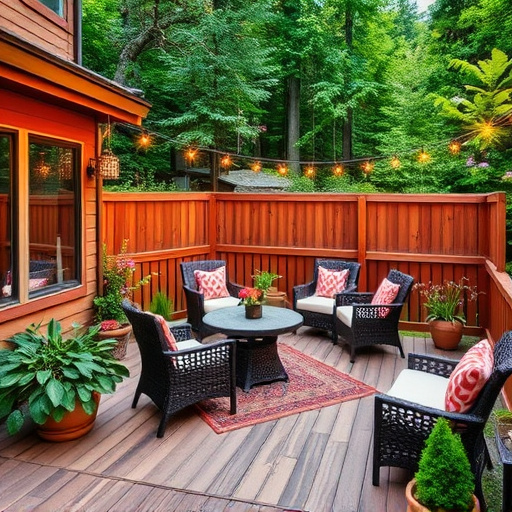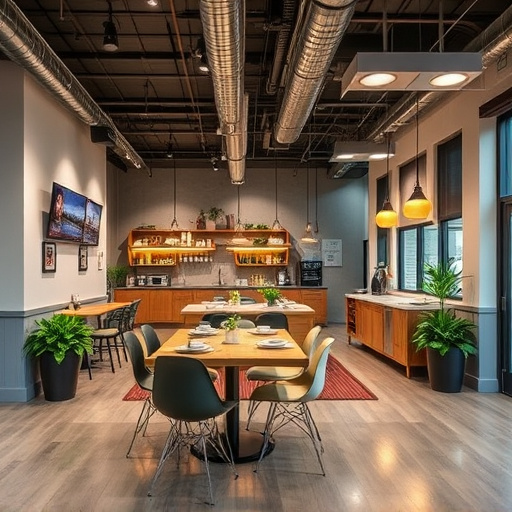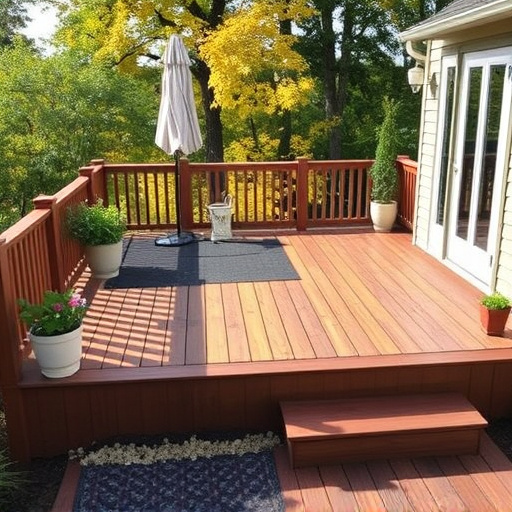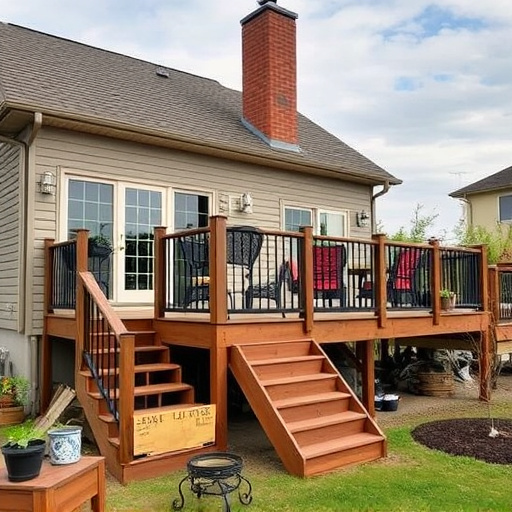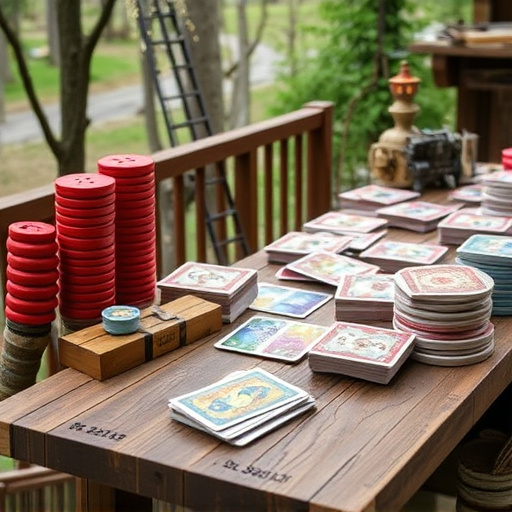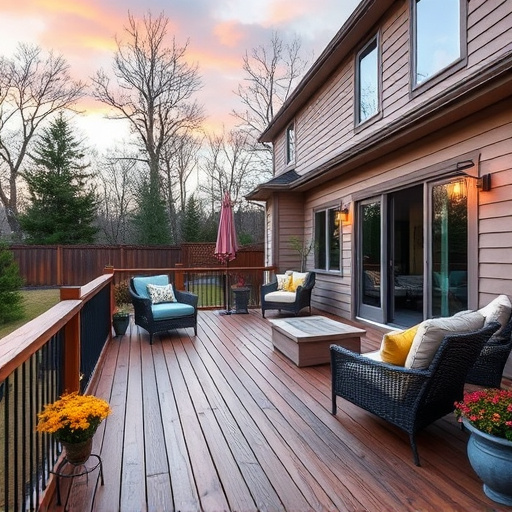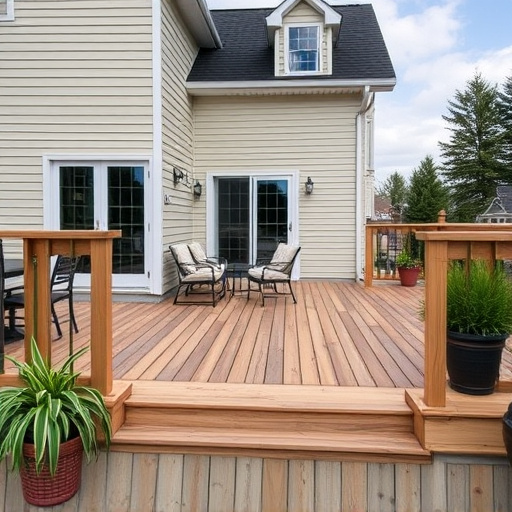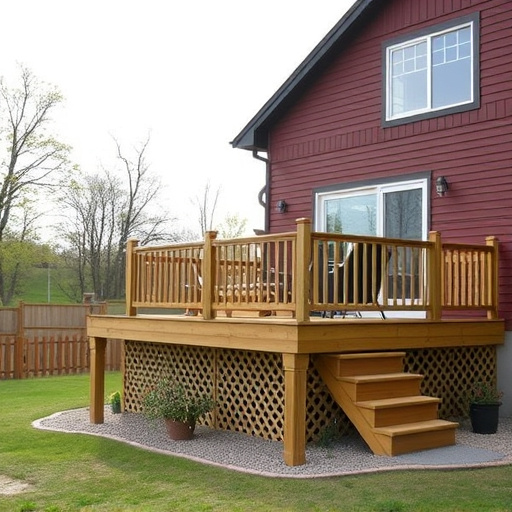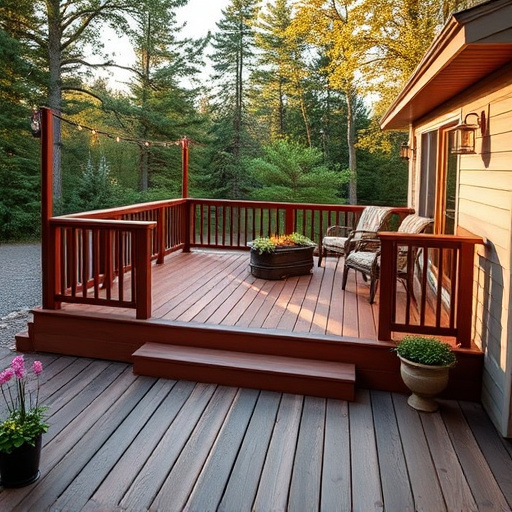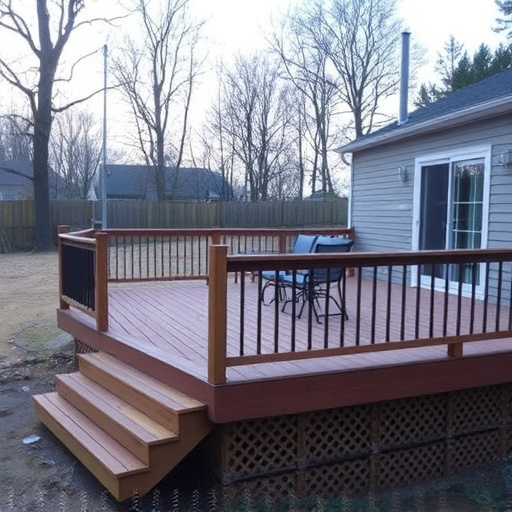When planning a residential decking on sloped terrain, assess slope severity, obstacles, and soil stability. Incorporate creative deck levels, proper drainage using treated lumber/composite decking, and commercial siding/roofing for year-round outdoor enjoyment. Opt for low-maintenance composite wood, integrate deck design with home architecture, and prioritize long-term durability and safety through structural integrity, railed barriers, inspections, and maintenance.
Building a residential decking on sloped terrain offers a unique challenge but can transform your outdoor space. This guide provides an in-depth look at creating a sturdy and safe deck in varied inclines. We’ll explore evaluation methods for site preparation, from assessing slope angles to identifying potential issues. Learn about smart material choices and design tricks tailored for inclined spaces. Additionally, discover installation techniques ensuring stability and safety on sloped terrain, enabling you to create a beautiful outdoor retreat.
- Evaluating Sloped Terrain for Deck Construction
- Choosing Suitable Materials and Design Considerations
- Installation Techniques for Stability and Safety on Inclined Spaces
Evaluating Sloped Terrain for Deck Construction
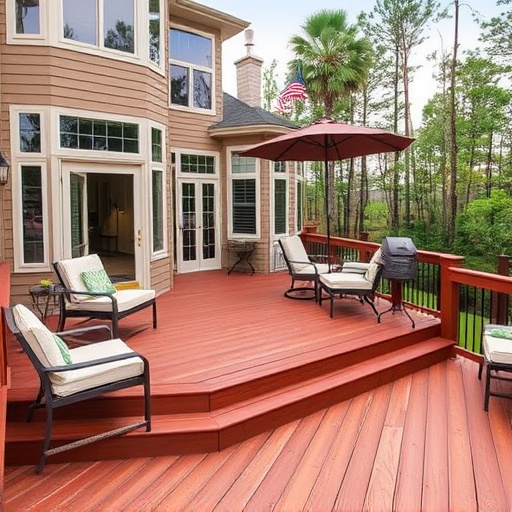
When considering residential decking on sloped terrain, careful evaluation is key to a successful project. Start by assessing the severity of the slope and identifying potential challenges unique to steep or uneven ground. Look for factors like large boulders, tree roots, or other obstacles that could affect construction. Additionally, evaluate existing soil conditions; unstable or compacted soil may require specialized engineering solutions.
Remember that sloped terrain offers opportunities for creative deck designs. Consider integrating levels and platforms to blend with the natural landscape while ensuring stability. Proper drainage is also crucial; incorporate appropriate grading and consider using materials that shed water effectively, such as treated lumber or composite decking. Integrating commercial siding or sophisticated roofing and gutter systems can enhance both functionality and aesthetics, especially if you plan for year-round enjoyment of your outdoor living space.
Choosing Suitable Materials and Design Considerations
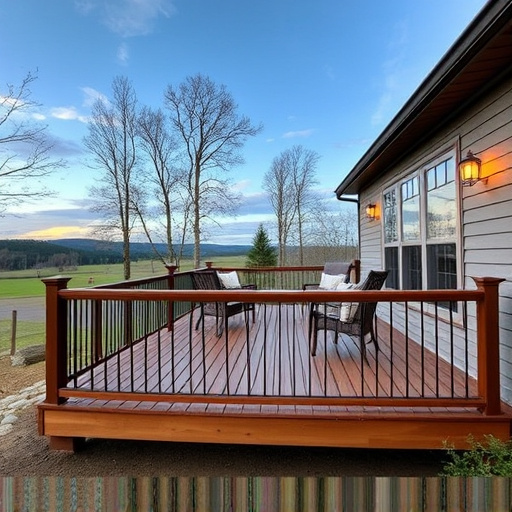
When designing a residential decking for sloped terrain, selecting the right materials is key. Opt for low-maintenance options like composite or synthetic wood that can withstand varying weather conditions and prevent rot, especially important in hilly areas prone to moisture. These materials also offer a more aesthetically pleasing finish compared to traditional wood, which may crack or warp over time.
Consider the overall design of your home and surrounding landscape when planning the decking layout. Ensure the deck design complements existing roofing services and siding installation while enhancing the property’s natural beauty. Incorporate functional elements like built-in benches or planters that seamlessly blend with the terrain. Additionally, think about long-term durability and safety by choosing a design that provides adequate drainage and prevents water pooling, which could lead to slippery surfaces—a common issue on sloped ground. Effective planning can result in a stunning and durable residential decking that enhances outdoor living spaces, offering both functionality and aesthetic appeal, much like robust roofing solutions for any home.
Installation Techniques for Stability and Safety on Inclined Spaces
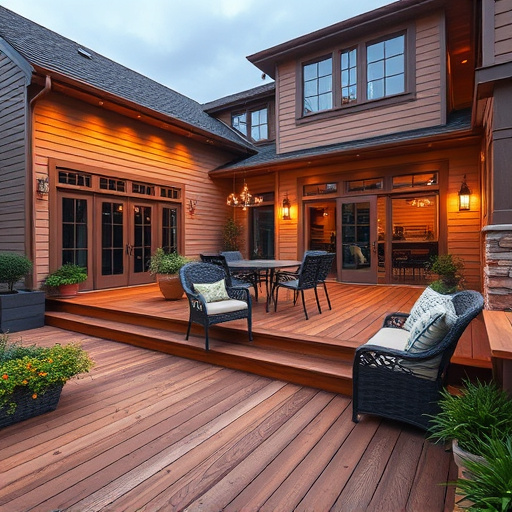
When building a residential decking on sloped terrain, stability and safety should be paramount. One effective technique to ensure structural integrity is to utilize anchored or pinned deck designs. These methods involve securing the deck to fixed points in the ground, often utilizing metal fasteners or pins driven deep into the soil or rock. This approach is particularly crucial for steeper inclines, as it distributes the weight evenly and minimizes the risk of the deck shifting or sliding.
Additionally, incorporating features like railed barriers can enhance safety by preventing accidental falls. For existing decks on inclined spaces, regular inspections are vital to identify any signs of wear or damage, prompting necessary repairs such as siding replacements or roof fixings. Regular maintenance, including cleaning and sealing, not only improves the deck’s aesthetics but also prolongs its lifespan, ensuring a sturdy and secure outdoor living space.
Building a residential decking on sloped terrain requires careful evaluation, thoughtful design, and precise installation techniques. By understanding the unique challenges of inclined spaces, selecting the right materials, and implementing safety measures, you can create a stunning and stable outdoor living space. Remember, proper planning ensures your deck is both functional and safe for years to come, enhancing your home’s value and beauty in the process.




